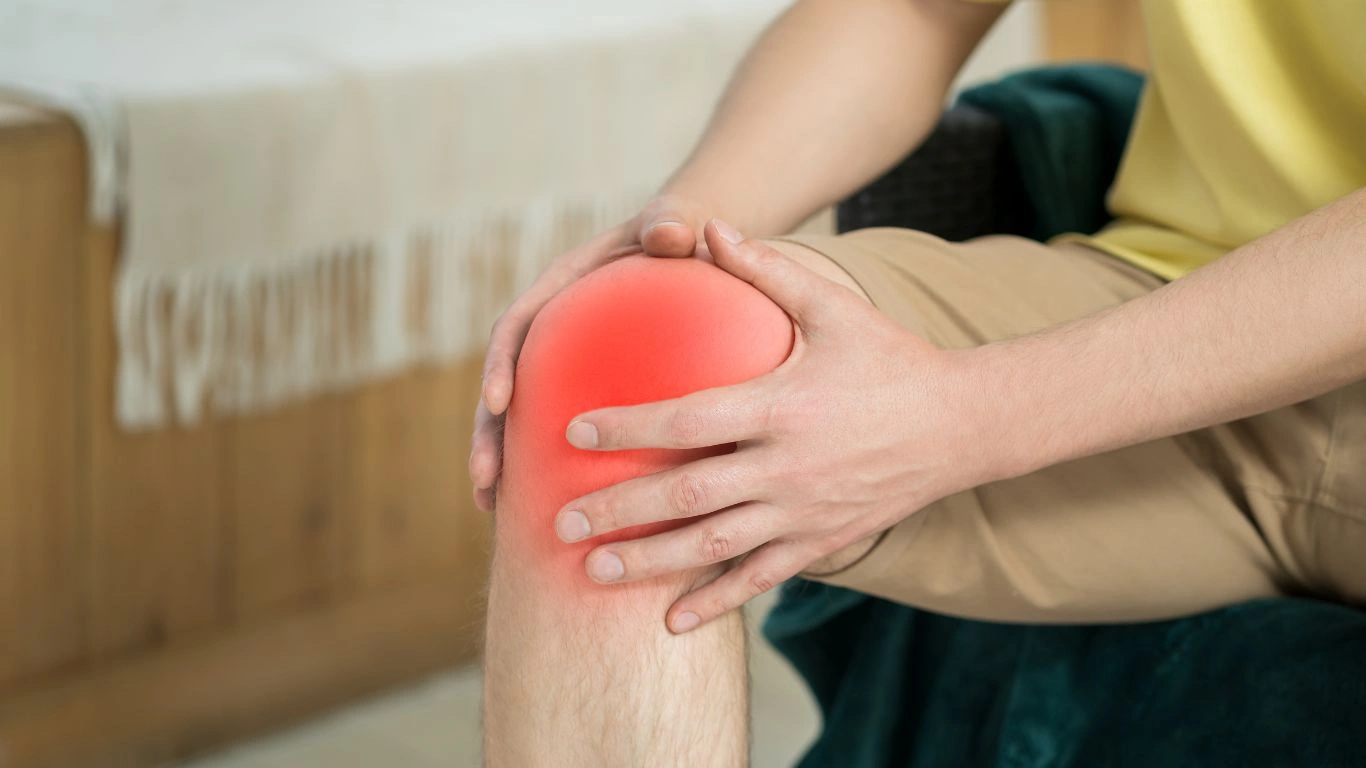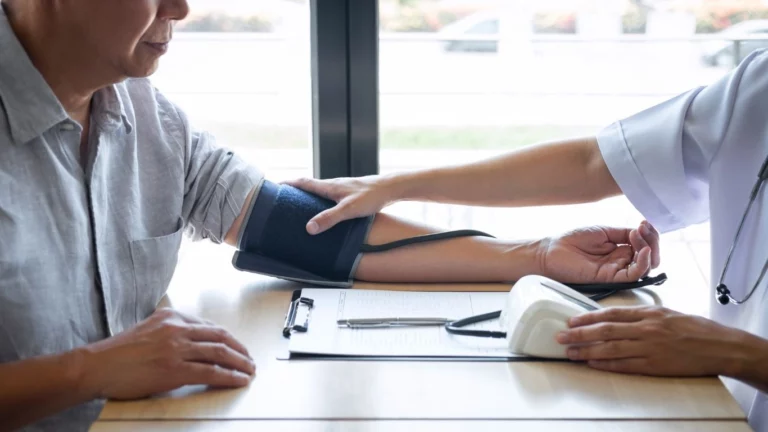Shocking Differences Between Joint Pain vs Rheumatoid Arthritis
Let’s be real—joint pain is a frustrating beast. I’ve had countless patients walk into my exam room convinced they have rheumatoid arthritis (RA) just because their knees or fingers ache after a long day. And I get it—when your joints hurt, it’s easy to assume the worst. But here’s the thing: not all joint pain is rheumatoid arthritis. As a Rheumatology nurse practitioner, I’ve seen both ends of the spectrum—mild wear-and-tear discomfort to full-blown autoimmune flares. Understanding the difference between joint pain vs rheumatoid arthritis is a game-changer for getting the right care and peace of mind.
What Exactly Is Joint Pain, Anyway?

Joint pain, also known as arthralgia, is something nearly everyone experiences at some point. It’s that nagging ache in your knees after hiking or the stiffness in your hands after a long day of typing. It’s not necessarily a sign of something serious—sometimes, your joints are just letting you know they’ve had enough.
Common Causes of Everyday Joint Pain
From what I’ve seen in the clinic, joint pain tends to show up from a variety of non-autoimmune sources:
- Osteoarthritis: The “wear-and-tear” arthritis. This one’s common in older adults and athletes alike. It usually affects joints like knees, hips, and spine.
- Overuse or injury: Think repetitive motion injuries, like tennis elbow or runner’s knee.
- Bursitis or tendonitis: Inflammation of soft tissues around the joint—not the joint itself.
- Viral infections: Ever had the flu and felt achy all over? Yep, that’s joint pain too.
These types of pain are usually manageable with rest, ice, over-the-counter meds, and lifestyle tweaks. They may be annoying, but they’re rarely destructive or progressive.
Then There’s Rheumatoid Arthritis—A Whole Different Story

This is where the confusion kicks in. RA isn’t just “joint pain.” It’s an autoimmune condition where the body mistakenly attacks its own joint tissue. What I often tell my patients is: if your joint pain feels symmetrical (like both wrists or both knees), you wake up stiff for over an hour, and you’re feeling weird fatigue, we might be looking at something deeper than basic joint soreness.
How RA Presents Differently
Let me walk you through some of the hallmarks of RA that I’ve seen over the years:
- Persistent swelling: The joints are not just sore—they’re visibly puffy and feel warm to the touch.
- Morning stiffness: RA stiffness lasts way longer than just “getting the kinks out.” We’re talking 45 minutes or more every morning.
- Systemic symptoms: Think beyond the joints—fatigue, low-grade fevers, even weight loss sometimes show up with RA.
- Symmetrical joint involvement: Both hands, both wrists, both knees—it’s rarely just one side of the body.
When I hear these symptoms, I usually order a set of labs—like rheumatoid factor, anti-CCP antibodies, and inflammatory markers (ESR, CRP). Imaging like X-rays or ultrasound can show us if there’s erosion or joint space narrowing—both big red flags for RA.
Joint Pain vs Rheumatoid Arthritis: The Key Differences

Alright, let’s break it down a bit more. Here’s what I usually explain to my patients when they ask how to tell the difference:
- Onset: Joint pain often comes and goes depending on activity. RA develops more gradually and doesn’t care if you rested.
- Location: Regular joint pain might hit one spot; RA tends to be symmetrical and affects small joints first.
- Duration: Is the stiffness short-lived or dragging past an hour? That’s a major clue.
- Whole-body effects: RA brings fatigue, malaise, and a “sick” feeling that joint pain alone usually doesn’t.
From my experience, listening to your body’s patterns over time makes all the difference. The earlier RA is caught, the better the outcomes with treatment. And honestly, I’ve seen people get their lives back when they finally get the right diagnosis and start therapy that works for them.
So… What Triggers Rheumatoid Arthritis?

This is the million-dollar question I get asked a lot: “Why did I get RA?” And honestly, I wish the answer were simple. But here’s what we do know from current research and from what I’ve seen clinically—it’s a mix of genetics, environment, and a bit of bad luck.
RA often runs in families, so if your mom, dad, or even a sibling has it, your chances do go up. But it’s not just about genes. Things like smoking, long-term exposure to certain chemicals, or even untreated gum disease (yep, you read that right—oral health matters!) can flip the switch. I’ve had patients who were fine one year and then had a massive RA flare after an infection or major life stressor.
Here Are a Few Common Triggers That Can Contribute:
- Smoking: One of the strongest environmental risk factors, especially in those with a genetic predisposition.
- Hormonal changes: RA often shows up more in women, especially after childbirth or during menopause.
- Chronic stress: Ongoing physical or emotional stress can affect immune regulation.
- Infections: Certain viruses or bacteria might act as a spark in the wrong immune system.
So, while we can’t always pinpoint a single reason, we can spot patterns—and that helps with prevention and management strategies down the line.
Diagnosis: When to See a Specialist (Like Me!)

Okay, here’s the deal. If your joint pain is new, severe, persistent, or affecting your day-to-day life, please don’t wait around on Dr. Google. I’ve had patients wait months—sometimes years—before getting referred to rheumatology. By then, the damage is already happening, and reversing it is tough.
Here’s a little checklist I give folks when they’re unsure if it’s time to get checked for RA:
- Stiffness lasting more than 45 minutes in the morning.
- Swelling in more than one joint—especially small ones like fingers, wrists, or toes.
- Symptoms persisting for over 6 weeks.
- Fatigue that won’t go away—even with sleep.
- Unexplained weight loss or low-grade fevers.
If you nodded your head to two or more of those, it’s probably time to see a rheumatology provider. I always tell my patients: early treatment = less joint damage = better quality of life. Don’t “wait and see.”
Treatment Approaches: Managing RA vs Managing Basic Joint Pain

This is where the joint pain vs rheumatoid arthritis conversation really becomes important. The way we treat each one is completely different. Managing run-of-the-mill joint pain might involve a mix of rest, stretching, weight loss, and maybe some over-the-counter NSAIDs. But RA? That’s a different ball game.
How We Treat Rheumatoid Arthritis:
- DMARDs (Disease-Modifying Anti-Rheumatic Drugs): These are the backbone of RA treatment. Methotrexate is usually the first one we start with.
- Biologics: These targeted therapies go after specific parts of the immune system. Think Enbrel, Humira, or Rituxan.
- Steroids: Prednisone helps bring flares under control fast, but we try to taper off ASAP due to side effects.
- Lifestyle changes: Diet, stress reduction, sleep hygiene, and even physical therapy can play a huge role.
In contrast, your standard joint pain plan might involve:
- NSAIDs: Like ibuprofen or naproxen for pain and inflammation.
- Physical therapy: Strengthening muscles around the joint can ease stress on the bones.
- Supplements: Some folks find relief with glucosamine, turmeric, or omega-3s—though evidence varies.
- Weight management: Less weight on the joints = less pain.
From my clinical experience, when patients learn the difference in approach, they start to understand why proper diagnosis is so critical. Treating RA like it’s regular joint pain? That’s a recipe for long-term damage.
Living With RA: The Emotional and Physical Toll

I’ve had the honor of walking beside so many people through their RA journey, and let me tell you—it’s not just about the joints. It’s about how it affects work, family, energy levels, even identity. I’ve sat with patients who couldn’t hold their grandkids, open jars, or get out of bed without help. That emotional toll? It’s heavy.
That’s why I always approach RA care from a whole-person perspective. Yes, we manage meds and flares. But we also talk mental health, support systems, counseling, community, and pacing. I encourage journaling, therapy, support groups—even online forums—anything that helps you not feel alone in this.
So, whether you’re dealing with basic joint soreness or living with RA, just know that you deserve answers, support, and a care plan that fits you.
Daily Life: Adapting to the Challenges of RA vs Occasional Joint Pain

Let’s talk about the day-to-day grind. Because honestly, this is where the difference between joint pain vs rheumatoid arthritis really shows up for most people. While general joint pain might slow you down a little—like skipping a yoga class or icing your knees after a long walk—RA can completely hijack your routine.
I’ve worked with patients who’ve had to rethink how they cook, dress, or even hold a toothbrush. It’s not always dramatic, but the little things add up. One woman I saw started using adaptive tools in her kitchen after her hands became too swollen to grip a knife. Another had to switch to voice-to-text because typing became too painful. These changes aren’t about giving up—they’re about finding new ways to thrive.
Helpful Tools and Lifestyle Tweaks That Make a Big Difference:
- Ergonomic tools: Special can openers, jar grips, and utensils with larger handles help reduce strain.
- Compression gloves: Many of my RA patients wear them during the day or while sleeping to manage swelling.
- Joint protection techniques: Learning to lift, push, and carry with bigger joints (like elbows instead of fingers) can reduce flare-ups.
- Energy pacing: Breaking tasks into smaller chunks and planning rest breaks—so key!
With joint pain that’s not autoimmune, folks usually bounce back quicker and don’t need to make as many adjustments. They might use ice, stretch a bit, and be back to normal in a day or two. That’s why distinguishing between the two is so important—it shapes your entire approach to daily living.
Nutrition & Joint Health: Food as Fuel or Flare-Up?

Over the years, I’ve had countless conversations about diet and inflammation. Patients often ask, “What should I eat if I have RA?” And while there’s no magic food that cures autoimmune disease (trust me, I wish there were!), there are ways to use nutrition as a tool—not a cure, but a helpful ally.
Top Anti-Inflammatory Picks I Recommend to Patients:
- Fatty fish: Salmon, sardines, and mackerel are loaded with omega-3s.
- Colorful fruits & veggies: Berries, leafy greens, sweet potatoes—think antioxidant powerhouses.
- Turmeric and ginger: Natural anti-inflammatories with good supporting evidence.
- Whole grains: Brown rice, quinoa, oats—better than refined carbs for inflammation levels.
- Green tea: Packed with polyphenols that may help tame the immune system a bit.
At the same time, I suggest cutting back on ultra-processed foods, added sugars, and too much red meat. These things don’t “cause” RA, but they sure don’t help when your immune system is already in overdrive.
Even for folks with general joint pain, cleaning up your diet can make a noticeable difference. Less inflammation, better energy, even improved sleep—who doesn’t want that?
Joint Pain vs Rheumatoid Arthritis: When It’s Time to Take Action
If there’s one takeaway here, it’s this: knowing your body and listening to its patterns matters. Whether it’s minor joint pain or something more chronic like RA, don’t ignore what your joints are trying to tell you.
When people finally come in and get properly diagnosed, there’s often a mix of relief and regret. Relief that they’re not “imagining it”—and regret that they didn’t seek help sooner. My goal as a nurse practitioner has always been to empower patients to trust themselves, ask questions, and advocate for care that’s proactive, not reactive.
Here’s what I encourage:
- Track your symptoms—journaling really helps identify flare patterns and triggers.
- Get regular lab work if you’re under RA treatment. It helps guide dosing and treatment adjustments.
- Stay connected—whether that’s a support group, an online forum, or a close-knit family.
- Ask your provider about newer biologics or treatment combos if what you’re on isn’t cutting it.
I’ve seen people go from not being able to walk across the room to traveling, playing with grandkids, and living fully again. The earlier we intervene, the better the outcomes—especially with RA. Don’t wait until the damage is done.
References
Disclaimer
This article is for informational purposes only and does not replace professional medical advice, diagnosis, or treatment. Always consult with your healthcare provider for any questions regarding a medical condition. As a Rheumatology nurse practitioner, I share insights based on clinical experience, but individual cases may vary.

Tarra Nugroho is a dedicated Nurse Practitioner with a strong foundation in family and preventive care. She brings both compassion and clinical expertise to her practice, focusing on patient-centered care and health education. As a contributor to Healthusias.com, Tarra translates medical knowledge into clear, empowering articles on topics like women’s health, chronic disease management, and lifestyle medicine. Her mission is simple: help people feel seen, heard, and informed—both in the clinic and through the content she creates. When she’s not caring for patients, Tarra enjoys weekend hikes, plant-based cooking, and curling up with a good health podcast.






